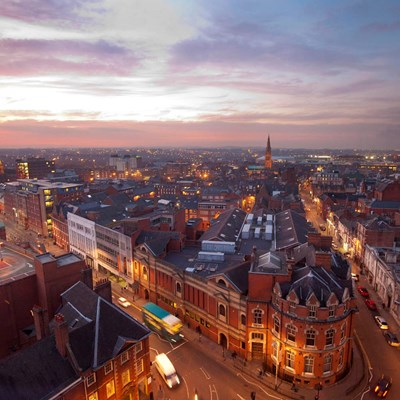PLANS for how Leicester’s sports, leisure and community facilities will reopen with the lifting of lockdown restrictions have been outlined in a new timetable.
Dozens of city council-run public buildings including entertainment venues, museums, sports centres, libraries and community centres have remained closed since the start of the year under national Covid-19 lockdown measures.
Over the coming months, those national restrictions are due to be gradually eased as set out by the Government, meaning buildings and other facilities can begin to reopen at fixed dates.
In Leicester, many of these buildings are key to carrying out the city’s Covid-19 testing and contact tracing programmes, while more than 240 staff who normally run sports centres and neighbourhood centres have been redeployed to carry out local Test and Trace work.
It means many of these buildings will not reopen straight away, but will do so in stages throughout the year, taking into account the demands both on buildings and staff needed for essential local Covid-19 work, and reflecting the national timetable for lifting of lockdown restrictions.
Leicester City Council employs around 6,000 non-school staff, the majority of whom have been working from home for the last 12 months.
Essential council services such as social care, housing and homelessness services have continued to be provided throughout the disruption to ensure the most vulnerable can still access the help they need.
Leicester City Council’s chief operating officer, Alison Greenhill, said: “While we will pay heed to the Government’s roadmap for easing lockdown restrictions, we will be deciding, based on the situation locally, how and when we will reopen some of our facilities.
“In some cases that is dependent on staff being available – currently 240 staff from our sports and neighbourhood services teams have been redeployed to carry out work tackling Covid-19, such as Test and Trace and Covid-19 testing. They will continue to do so for as long as that work is needed. Controlling the virus is an absolute key priority.
“Some buildings themselves, such as the Leicester Adult Education Centre, Fosse and Coleman Neighbourhood Centres, Hamilton Library and the Tudor Centre have been transformed into Covid-19 testing centres, and cannot yet reopen for normal business.
“While social distancing and other measures can readily be put in place at some of our venues, others will be much harder to operate with those restrictions in place, and might therefore have to reopen at a later point.
“It is vital that we proceed cautiously, and in the case of each building, judge not just whether it is allowed to reopen on a certain date, but whether it should reopen at that point.”
From Monday, March 29, outdoor sports such as golf and tennis have been able to resume in the city.
Gyms within sports centres at Aylestone, Braunstone and Cossington Street will be able to reopen from April 12. Markets will also fully reopen.
From April 12, all children's centres in the city will be open for one-to-one, individual contact only, but not for groups.
Children’s swimming lessons will be able to restart from May 3.
The Government hopes to remove all remaining restrictions on June 21, if targets needed in terms of reduced rates of Covid-19 have been met.
At that point many more activities can resume in Leicester, including public swimming and club swimming, group exercise sessions and indoor sports such as climbing.
Museums, libraries, community centres and other multi-use centres will also reopen, along with Leicester Adult Education College and Bishopdale Adult Learning Hub.
Leicester’s director of public health, Professor Ivan Browne, added: “People in Leicester have suffered longer under lockdown restrictions than in any other part of the country, and it is essential that we don’t undo all the hard work and sacrifices that have been made during the last 12 months to bring Covid-19 infection rates under control.
“Yes, we all want to get back to normal life as soon as possible, but we’ve got to continue to balance that against the risks of easing too many restrictions too early.
“The virus has not gone away, and we still need to protect ourselves and each other as we take these steps forward over the coming months."
(Ends)
